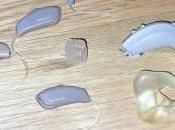Livingwithss
 Description
Description
Superficial Siderosis. Subpial Siderosis. Infratentorial Superficial Siderosis. No matter how your doctor officially labels your diagnosis odds are no one has the slightest idea of the battle you are about to face.
Due to the severe nature of the disease, in 2018 the Social Security Administration added superficial siderosis to the Compassionate Allowance list of conditions that allows for the fast-tracking of disability claims
What is Superficial Siderosis?
Explaining the process requires some big and complicated words. Not big as in real size or number of letters in a word but in the sense of consequences. Yes, it progresses slowly for those diagnosed, but what if those early years are spent searching for an explanation of random symptoms? Imagine living through a decade of endless testing and frustration with no answers.
Superficial siderosis develops when toxic iron molecules are curbed by a protein called ferritin. Together this forms a layer of hemosiderin that settles in various areas of the brain and spinal cord that are in contact with cerebrospinal fluid. Long-term exposure is toxic to the tissue underneath resulting in hearing loss, imbalance, dizziness, weakness, numbness and bowel/bladder dysfunction. Although easily identified by magnetic resonance imaging (MRI), superficial siderosis is often confused for other progressive neurological conditions such as multiple sclerosis, Parkinson’s, or multiple system atrophy.
MY BLOGS
- LIVING WITH SUPERFICIAL SIDEROSIS https://livingwithss.com/
LATEST ARTICLES ( 148 )
-
Finding The Right Healthy Diet
Living Your Best Life with Superficial Siderosis Our readers living with Superficial siderosis should be aware that living your best life means you need to... Read more
Posted on 03 September 2021 HEALTH -
Feed Your Brain Checking Vitamin D Levels

Protecting Cognition and Memory One detail Gary’s neuropsychologist brought up was his low vitamin D level. While it may be common knowledge calcium and... Read more
Posted on 25 August 2021 HEALTH -
Follow These Seven Steps To Begin Your Chelation Experience

Chelation Therapy For Superficial Siderosis In cases of superficial siderosis, attempting to remove the hemosiderin deposits with the prescription chelator... Read more
Posted on 22 August 2021 HEALTH -
Just Go Home And Live With It

When Neurology Has No Answers Greetings, fellow Superficial Siderosis patients; my name is Bena Travis. I’m a 62-year-old retired florist and wedding planner... Read more
Posted on 23 June 2021 HEALTH -
Julianne’s Story
Not A Head Cold? My name is Julianne. I am 64 years old and live in Devonport, a city in northern Tasmania. Tasmania is a large island state located 240 km... Read more
Posted on 20 June 2021 HEALTH -
The Hazard of Blood Thinners

The Anticoagulant Effect on Active Bleeds Suppose you have an identified or suspected active bleed. In that case, your doctors need to be aware of the hazard... Read more
Posted on 13 June 2021 HEALTH -
Sometimes You Need A Win For Team Chelation

I was diagnosed with Superficial siderosis in 2015, but it was late 2017 before I finally found a neurologist who was willing to listen and help me in any way h... Read more
Posted on 11 June 2021 HEALTH -
Knocking Out The Brain Zaps

Did they work the first-time round? It had been tough for me to tell if the first course of nerve blockers (Greater Occipital Nerve Block) worked now that a... Read more
Posted on 11 June 2021 HEALTH -
Remembering What It is Like to Get Out

Getting Out Again I was really looking forward to meeting my friends for the first time in 14 months; however, it wasn’t without a huge wave of anxiety. Read more
Posted on 30 May 2021 HEALTH -
Research Day

Taking Part in Superficial Siderosis Research Waking up for the Big Day I woke up to a bad headache, probably a bit of nerves and excitement about going to the... Read more
Posted on 23 May 2021 HEALTH -
Do I Still Have An Active Bleed?

Arriving at the Hospital The day had finally arrived; it was time to venture to the hospital in Cardiff for my first lumbar puncture in nearly two years. Read more
Posted on 16 May 2021 HEALTH -
My Last Music Festival

Download Festival Prior to 2017 I was a very outgoing person and had attended Download Festival nearly every year since I had turned 20. Read more
Posted on 05 May 2021 HEALTH -
How To Block The Agony Of Brain Zaps
The Slow Movement of Pandemic Care Having a rare condition can make it hard to get information as it is, but during the Covid-19 pandemic, it has stepped up a... Read more
Posted on 12 April 2021 HEALTH -
The Long Journey Here
Finding care for superficial siderosis patients moves in slow motion—the time spent searching for a diagnosis—next, the search for information. Read more
Posted on 24 March 2021 HEALTH -
Will Neglecting Your Hearing Loss Really Hurt Your Cognitive Ability?
Hearing loss is now one of the leading causes of disability worldwide, affecting more than six percent of the population. The impact on people’s lives is... Read more
Posted on 17 March 2021 HEALTH -
The Harsh Reality Of Falling Down

Falling Let’s face it, those of us with Superficial Siderosis have trouble navigating. Steps, floors, rugs, rugged terrain, small hills, clumps of dirt, or... Read more
Posted on 21 February 2021 HEALTH -
After Diagnosis

Fours Years On To say it has been a rollercoaster of events would be an understatement. With twists and turns coming so often, I have finally found a bit of... Read more
Posted on 02 February 2021 HEALTH -
A Sneak Peek Into The COVID-19 Immunization Journey

Trusting Science It’s natural to be reluctant to roll up your sleeve for something as new as the coronavirus vaccine. For those who also face the dual concern o... Read more
Posted on 10 January 2021 HEALTH -
The Painful Farewell To The Sounds Of Life

The Progression of Hearing Loss in Superficial Siderosis Hearing loss is one of the most common symptoms of Superficial Siderosis. Read more
Posted on 05 January 2021 HEALTH -
The Struggle Of Dual Neurological Conditions

Superficial Siderosis and Hydrocephalus Having superficial siderosis is one thing, but sometimes like me, it’s possible to have other disabling neurological... Read more
Posted on 12 December 2020 HEALTH
